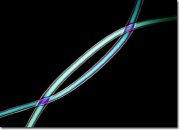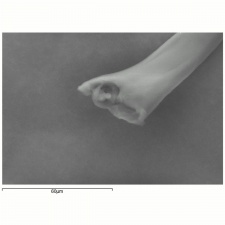Polypropylene fiber
Description
A manufactured fiber made from the polymers or copolymers of polypropylene. In 1954, Giulio Natta (Milan Polytechnic, Italy) polymerized propylene and by 1957 polypropylene fibers were being commercially produced by Montecatini Societa Generale (Italy). Polypropylene fibers are lightweight, smooth and white with a slightly waxy feel. They are resistant to wear, crushing, acids, alkalis, moisture, fungi, and insects. Olefin fibers slowly degrade in sunlight and can be stained by oils. Polypropylene fibers are used to make rope, fishing nets, sewing threads, diaper covers, indoor-outdoor carpeting, artificial grass, upholstery fabrics, and stay-dry clothing. They are also used for geotextiles fabrics, pavement repair, roofing felts, and artificial ski slopes.
Synonyms and Related Terms
polypropylene fibre; polyolefin; olefin; Celestra; Herculon; Marvess; Patlon; Typar; Fibrite; Meraklon; Aberclare; Deltafil; Gymlene; Neolfil; Polycrest; Reevon; Spunstron; Tritor;fibras de polipropileno (Esp.)
Other Properties
Soluble in perchloroethylene, but may be dry-cleaned in cold trichloroethylene or white spirit. Resistant to strong acids and alkalis. Cross sections = circular or elliptical . Tenacity = 3.5-9.0 g/denier; Moisture regain =
| Composition | [C3H5]n |
|---|---|
| CAS | 9003-07-0 |
| Melting Point | 160-165 |
| Density | 0.85-0.94 |
Hazards and Safety
May accumulate static electricity. Burns with a heavy, sooty, waxy smoke. Degraded by ultraviolet light and may contain UV absorbers or antioxidants.
Additional Information
M. Joseph, Introductory Textile Science, Holt Reinhold & Winston, Fort Worth, 1986, p. 135. G.Cook, Handbook of Textile Fibres:II. Man-made Fibres, 5th edition, Merrow Publishing Co., Durham, England, 1984. p. 564.
Comparisons
[[media:|Properties of Synthetic Fibers]]
Properties of Synthetic Fibers
Additional Images
Authority
- Hoechst Celanese Corporation, Hoechst Celanese Corporation, Dictionary of Fiber & Textile Technology (older version called Man-made Fiber and Textile Dictionary, 1965), Hoechst Celanese Corporation, Charlotte NC, 1990
- Marjory L. Joseph, Marjory L. Joseph, Introductory Textile Science, Holt, Rinehart and Winston, Fort Worth, TX, 1986
- Identification of Textile Materials, The Textile Institute, Manchester, England, 1985
- J.Gordon Cook, J.Gordon Cook, Handbook of Textile Fibres:II Man-made Fibres, Merrow Publishing Co. , Durham, England
- Rosalie Rosso King, Rosalie Rosso King, Textile Identification, Conservation, and Preservation, Noyes Publications, Park Ridge, NJ, 1985
- G.S.Brady, G.S.Brady, Materials Handbook, McGraw-Hill Book Co., New York, 1971 Comment: p.637




